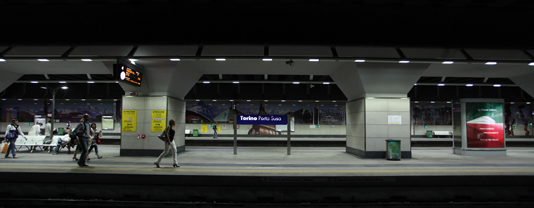In Piedmont, in the years leading up to and immediately following the unification of Italy, it was decided to build a railway network, one which still today, over 150 years later, is still vital for the traffic of the whole country. The connection with Genoa and its port, built from the start as a double track line, overcame huge obstacles for those times and dates from 1854; the Fréjus rail tunnel that connects Italy and France was inaugurated in 1871, while the Simplon tunnel between Domodossola and Brig, Switzerland, wasn’t completed until 1906. The region is still today crossed by some of the main national and international lines and is now the site of the construction of the new Turin-Lyon high-speed line that, with a very long tunnel, will cross the Alps once again, and of the Terzo Valico dei Giovi line to Genoa and the sea. The city of Turin, the regional capital and home to Fiat, the historic automaker, but also to famous trains, has seen impressive works in recent years that have modernized its railway infrastructure. The construction of the “Passante Ferroviario” underground urban line and of the new Porta Susa train station, it, too, below ground, has revolutionized train circulation, with significant benefits for both high-speed and local public transport trains. To find out more, to discover all the secrets of the Piedmont network and the projects now under way, we met with Paolo Grassi, Director of the Turin Maintenance and Operations Department of Rete Ferroviaria Italiana SpA, the operator of the national infrastructure.
Railway Engineering: Eng. Grassi, you head one of RFI’s most important Maintenance and Operations Departments. What is the area entrusted to you and what are your tasks?
Paolo Grassi: We operate the railway systems located more or less within the boundaries of Piedmont and Valle d’Aosta, along with a few bits of Liguria. The railway line in Valle d’Aosta is extremely limited, just 81 km of single-track line, non-electrified between Ivrea and Pré-Saint-Didier. In Piedmont, on the other hand, the network extends for around 1900 km, subdivided between 588 km of main lines, 1255 km of secondary lines and 85 km of hub lines, basically those relating to the Turin area.
Full article is available only for registered users.
Click the link below to download pdf version of Railway Engineering
